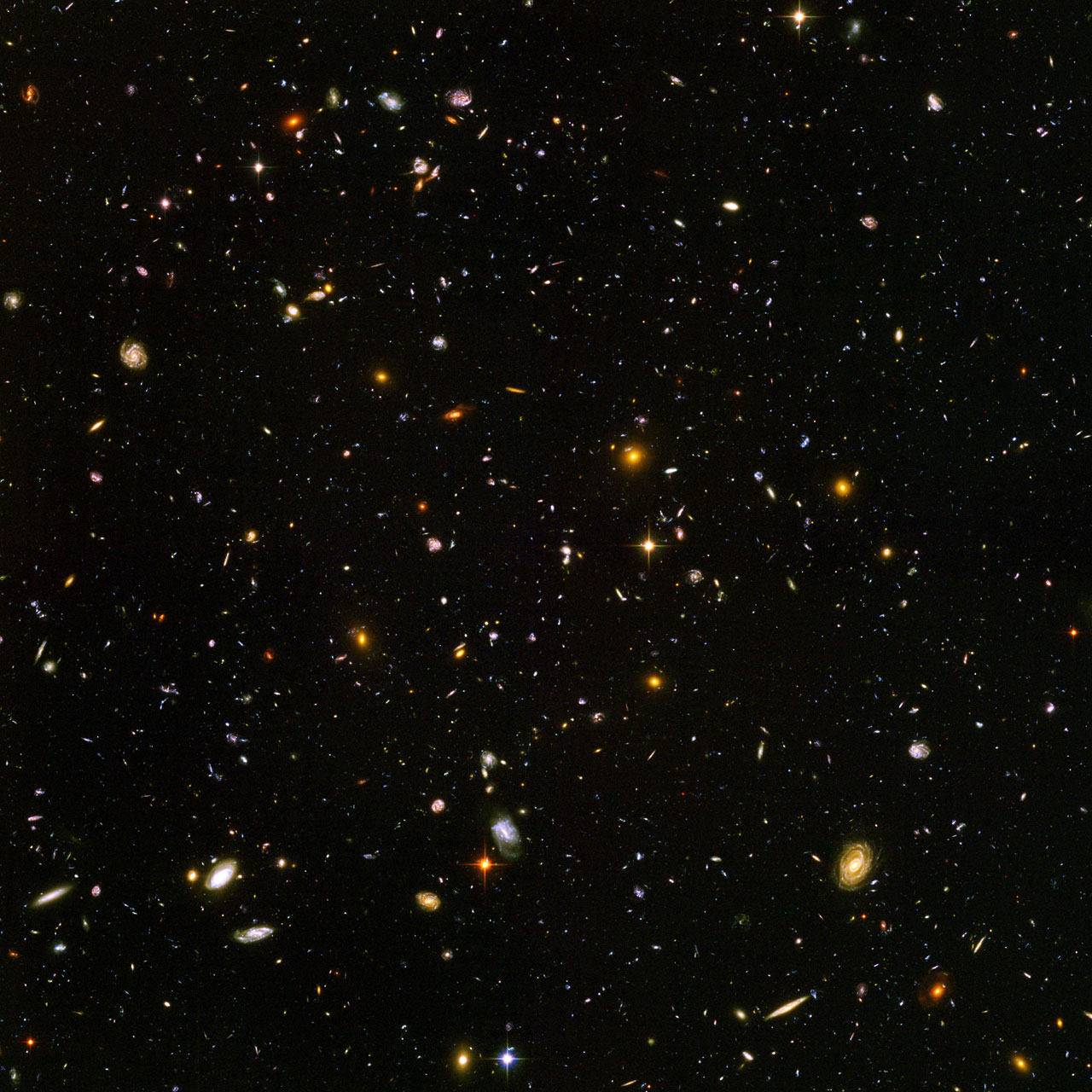Borrowed Stardust
Fermi's Paradox poses the question: Given that the universe is so massive, and given that it must have many places that can support life, where is everyone else?
We know that the universe is not both (1) infinitely old and (2) infinitely big, because if both things were true, the night sky would be completely lit up.
Light would be coming from all directions from an infinite series of galaxies, and that light would have had time to reach us.
Instead, our vantage point looks like this:

To capture that image, the Hubble opened its shutter to the universe for a whopping 11.3 days. The points of light here are not stars, they're galaxies. And each of those galaxies contains billions of stars.
The Fermi Paradox poses the question: Given that the universe is so massive, and given that it must have many places that can support life, where is everyone else? Surely enough time has passed for an advanced civilization to invent interstellar travel. So why haven't we made contact with any other life forms?
John von Neumann pointed out in the 1950s that the easiest way for such a civilization to explore the universe would be to create a series of probes that were capable of building copies of themselves. As they encountered more solar systems and more materials, the number of probes would explode exponentially, making it relatively easy to colonize vast swaths of the cosmos.
But we have yet to find evidence of such advanced peers, so we are left alone to ponder these questions for now.
Our lives are incredibly finite, compared to the age of the universe, but we are lucky to have our "borrowed stardust" (to steal Maria Popova's phrase) to briefly experience the wonder of the cosmos.
It reminds us that there is more to our days than the next item on our to do lists — that life is a journey, not a destination. And that exploring these mysteries is but one path towards a life well-lived.
See also: Cosmic Songs